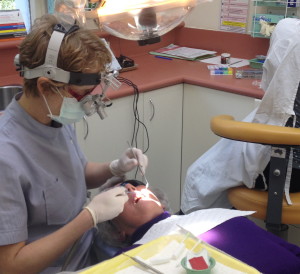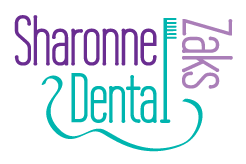inlays and onlays
 Inlays and onlays are used to rebuild teeth that have lost a very large amount of their structure. This renders them weak and not strong enough to support a direct filling. Unlike direct fillings which are placed into the tooth in a single stage, inlays and onlays are made outside the mouth in the laboratory using impressions of the prepared tooth. They are then cemented into place, making it a two stage procedure.
Inlays and onlays are used to rebuild teeth that have lost a very large amount of their structure. This renders them weak and not strong enough to support a direct filling. Unlike direct fillings which are placed into the tooth in a single stage, inlays and onlays are made outside the mouth in the laboratory using impressions of the prepared tooth. They are then cemented into place, making it a two stage procedure.
The materials used are gold, many kinds of ceramics and porcelain, and laboratory cured composite. Gold has the best and longest track record and still offers the best longevity of any material. Modern ceramics are catching up, and composite is the least durable and cheapest. Your tooth will be evaluated and if an inlay or onlay is recommended the material choices will be discussed in detail. An inlay sits within the tooth between the cusps. An onlay incorporates missing cusps and covers and protects the biting surface. Both involve the same process to make, which is a very similar process to making a full crown.
The procedure for inlays and onlays:
Visit one:
- Local anaesthetic is used to make the tooth and surrounding areas numb.
- The tooth surface is prepared and shaped for the restoration.
- An impression or mould is taken of your teeth using a special very accurate rubber material to capture the prepared shape. An impression is also taken of the opposite jaw which allows the technician to evaluate the bite.
- A temporary restoration will be placed onto the prepared tooth to protect it while your inlay or inlay is being made in the laboratory. It is necessary to avoid very heavy chewing on the temporary restoration as it isnt very strong.
- The impression is sent to my dental laboratory where my technicians will fabricate your inlay or inlay. This usually takes 2-3 weeks.
Visit two:
- Local anaesthetic is given as required to numb the tooth and surrounding area.
- The temporary restoration is removed and all the cement thoroughly cleaned.
- The inlay or onlay is tried in to ensure that it fits perfectly, your bite is comfortable and you are very happy with the appearance.
- The inlay or onlay will then be permanently cemented or bonded in place.
Advantages of inlays and onlays over direct fillings:
- A very precise and close fitting margin (junction of the tooth and filling) can be achieved, minimsing the risk of decay and leakage.
- The choices of material to use are much wider and less limited than for direct fillings.
- The contouring and shape can be perfect, making it easier to clean and better for the gum.
- The shape of the tooth can be improved eg; it can be built out to close a space which may be catching food and be strong.
- Inlays and onlays are stronger and more wear resistant than direct fillings. Onlays actually protect the tooth from breaking and add strength back to the tooth.
- Gold onlays are an excellent option allowing all the remaining tooth to be conserved. Often the only alternative is to remove more tooth to make room for a full crown which is more destructive. Both gold onlays and gold crowns have a similar strength and durability.
